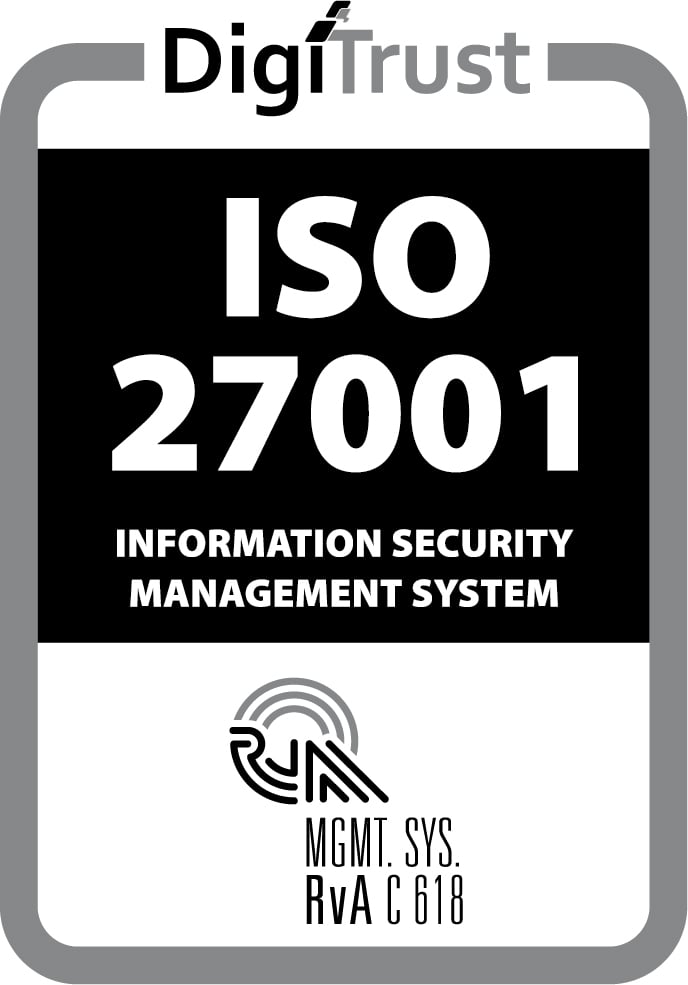The growing threat of cyberattacks on retail companies and the introduction of complex new privacy regulations mean retailers need airtight data security systems. A breach or privacy violation can result in hefty fines and a steep loss in customer trust, which can threaten a retail business’s future.
Unfortunately, data security in the retail industry often relies on a patchwork of legacy systems, making it difficult to implement strong cybersecurity measures. But rebuilding these systems is expensive, and an overhaul risks exposing sensitive customer data and disrupting your business’s day-to-day operations.
Low code development offers an alternative solution. In this guide, you’ll learn why low code is a game-changer for ensuring data security and maintaining—even growing—customer trust in retail.
Short on Time? Here’s a Brief Overview:
-
Retailers face increasing cyberattack threats and more complex data privacy regulations but often rely on legacy systems with outdated security measures.
-
Low code platforms enable retailers to integrate legacy systems with modern data security tools and build custom data handling processes to ensure compliance.
-
Applications, workflows, and integrations developed with low code are highly secure, scalable, and editable to meet your business’s needs as threats and regulations evolve.
-
When adopting low-code for retail, assessing your organization’s readiness and choosing an expert low-code partner is essential. You should also consider cybersecurity in everything you build, train your employees on the importance of data security, and plan for future changes to your business’s security needs.
What Are the Key Challenges in Ensuring Retail Data Security?
Retailers face a more challenging data security environment than ever before. Cybersecurity threats are increasing, with an estimated 25% of all cyberattacks targeting the retail industry. In 2023, nearly 70% of retailers in the US were confronted with ransomware attacks, which involve threats to expose stolen information.
At the same time, retailers must navigate new, overlapping privacy regulations, such as Europe’s General Data Protection Regulation (GDPR), the California Consumer Privacy Act (CCPA), and the Payment Card Industry Data Security Standard (PCI DSS). Ensuring your business complies with these regulations can be time-consuming and costly if your company relies on outdated information systems that don’t support automation.
The consequences of falling prey to a cyberattack or falling out of compliance with privacy regulations can be severe. In addition to paying a ransom or fine, you risk losing customers’ trust in your business. In a recent survey, 66% of US consumers said they would not trust a company after it lost their data to a breach, and 44% said they would blame the company for failing to secure their data. In light of those grim statistics, it’s absolutely essential that retailers keep customer data secure.
However, legacy systems often fail to secure data because they rely on outdated security tools and can’t integrate data across channels. Retailers need scalable systems that can manage vast amounts of customer data from multiple sources.
While building this type of system from scratch would be cost-prohibitive to many companies, using low code tools is inexpensive and fast.
How Low Code Platforms Solve These Challenges?
Low code platforms are development tools that require very little coding. Instead, they use customizable templates, drag-and-drop interfaces, and premade components.
That’s important because it reduces the time and complexity required to build new integrations, automations, and data security features. For example, low code tools enable you to integrate legacy systems with new identity management software in days instead of weeks or months. You can also integrate legacy systems with Internet of Things (IoT) devices, digital touchpoints, and other data sources to create a unified data management platform.
Other ways to use low code to address data security challenges include creating real-time monitoring dashboards for fraud detection, building workflow automations for compliance, and establishing custom reporting systems.
Since low code development is speedy and low cost, your team can quickly iterate through prototypes to build a robust data management solution for your business. In addition, systems created through low code are highly scalable. These capabilities ensure the products you build can keep up as you collect more customer data, regulatory requirements change, and cyber threats evolve.
Why Low Code is a Game Changer for Retail Data Security?
Low code software has several important benefits for retail data security.
First, it can enhance basic data security measures for your frontline defense against cyberattacks. Low code platforms, for example, can help you build applications with embedded encryption, implement secure authentication protocols, and design fraud detection algorithms.
Second, low code can make it easier to comply with privacy regulations by automating many aspects of compliance. You can track all required compliance data and assemble reports automatically, freeing up your compliance team to work on more complex projects.
Another benefit of low code development is that it costs less than traditional development and shortens development cycles. That means you can reduce spending on security applications while quickly acquiring more robust security measures. As threats and regulations change in the future, you can easily modify your low code applications to adapt.
These capabilities reduce your business’s susceptibility to data loss and position your company as a security leader in the retail space. Best of all, they ensure customers feel safe doing business with you.
Strategic Considerations for Adopting Low Code in Retail
While low code can be transformational for your business’s data security, you’ll want to be sure your business is ready to take on low code development. Here are several steps you can take to prepare for low code adoption:
Assess organizational readiness
Before implementing low code solutions, evaluate your business’s internal security capabilities and shortcomings. You can use this analysis to identify opportunities for low code automation or integrations that make a difference. It’s also an opportunity to establish clear goals for your business’s low code development program.
Choose the right low code partner
When you’re sure your organization is ready for change, focus on choosing the best low code platform and a low code adoption partner, such as CLEVR, that can ensure the success of your security transformation. Your low code partner can build tailored solutions for your retail operations and help your security team adopt agile development processes for the future.
Embed cybersecurity at every step
Ensure everything your team builds using low code software complies with the latest security standards. You can use your low code platform’s built-in security tools or integrate with your business’s existing cybersecurity platforms. All low code platforms support role-based permissions, and you should consistently implement them to ensure access to sensitive customer data is strictly controlled.
Train teams and align stakeholders
A key aspect of digital security involves your employees understanding the importance of protecting customer data and how low code tools help you achieve this goal. With appropriate training, employees are more likely to use the low code development tools you provide rather than turn to workarounds that could compromise data.
Plan for continuous evolution
Even before getting started with low code development, it’s worth creating a roadmap that charts how your business’s data security measures will evolve in response to changing threats and regulations. This roadmap can help you decide what security tools to build and how to structure them so they can be scaled or modified down the road.
Final Thoughts
In retail, growing threats and complex regulations make security teams’ jobs more challenging than ever. Low code development enables retailers to respond to these challenges by shortening development cycles, integrating legacy security systems, and making it easier to build custom security monitoring and rapid response tools. These enhancements can protect companies from costly attacks, boost their reputations, and more.
Ready to learn more? Check out CLEVR’S low code solutions for the retail industry.
Research Methodology
This guide relied on retail industry research, case studies of retailers using low code solutions, and CLEVR’s experience building data security products with low code. Recommendations are based on insights from successful digital transformation efforts by major retailers, with a focus on efforts to better secure customer data.
FAQs
How can low code development help retailers secure their data?
Low code development tools enable retail companies to integrate legacy systems with modern identity management systems, endpoint security tools, intrusion detection systems, and more. Retailers can also use low code platforms to build custom data-handling workflows or fraud detection systems.
Is low code good for complying with data privacy regulations?
Retailers can use low code tools to develop automated data handling workflows to ensure compliance with data privacy regulations like GDPR. Low code tools can also be used to automatically build compliance reports, saving time and ensuring retailers catch non-compliant data uses early.




